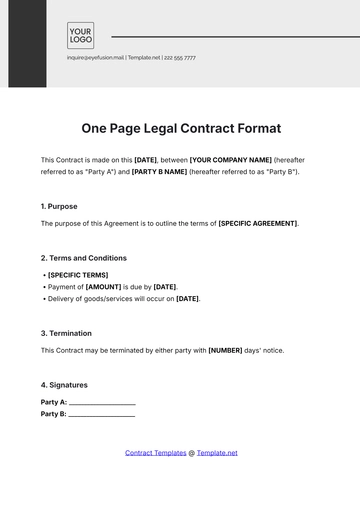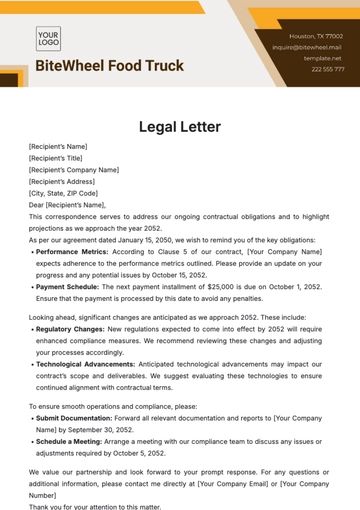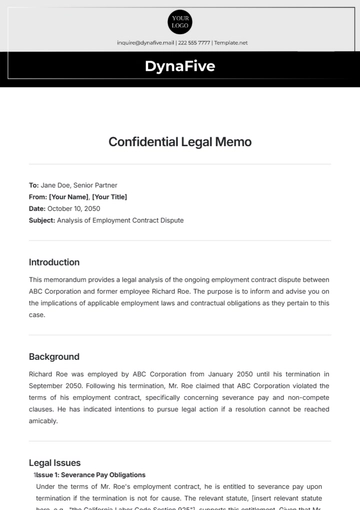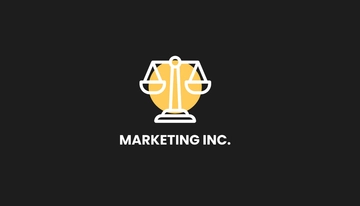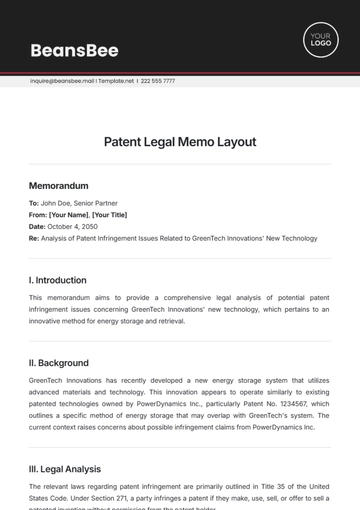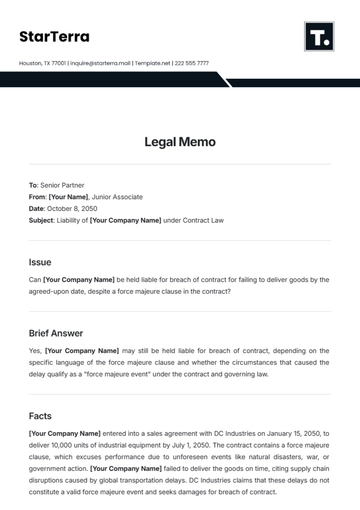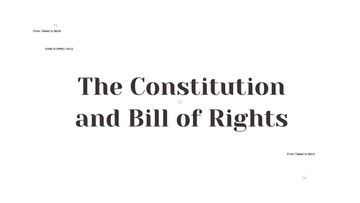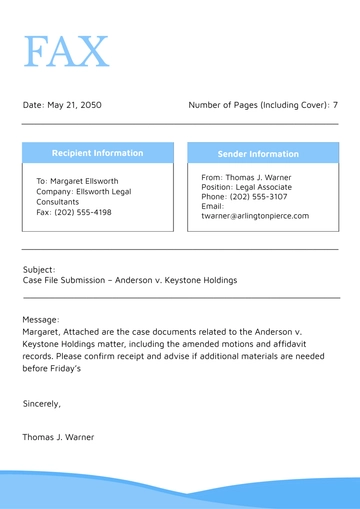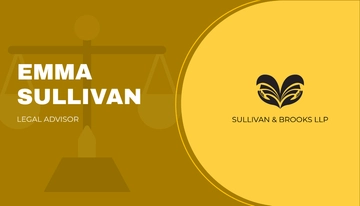Free Legal Review of Marketing Materials in Advertising
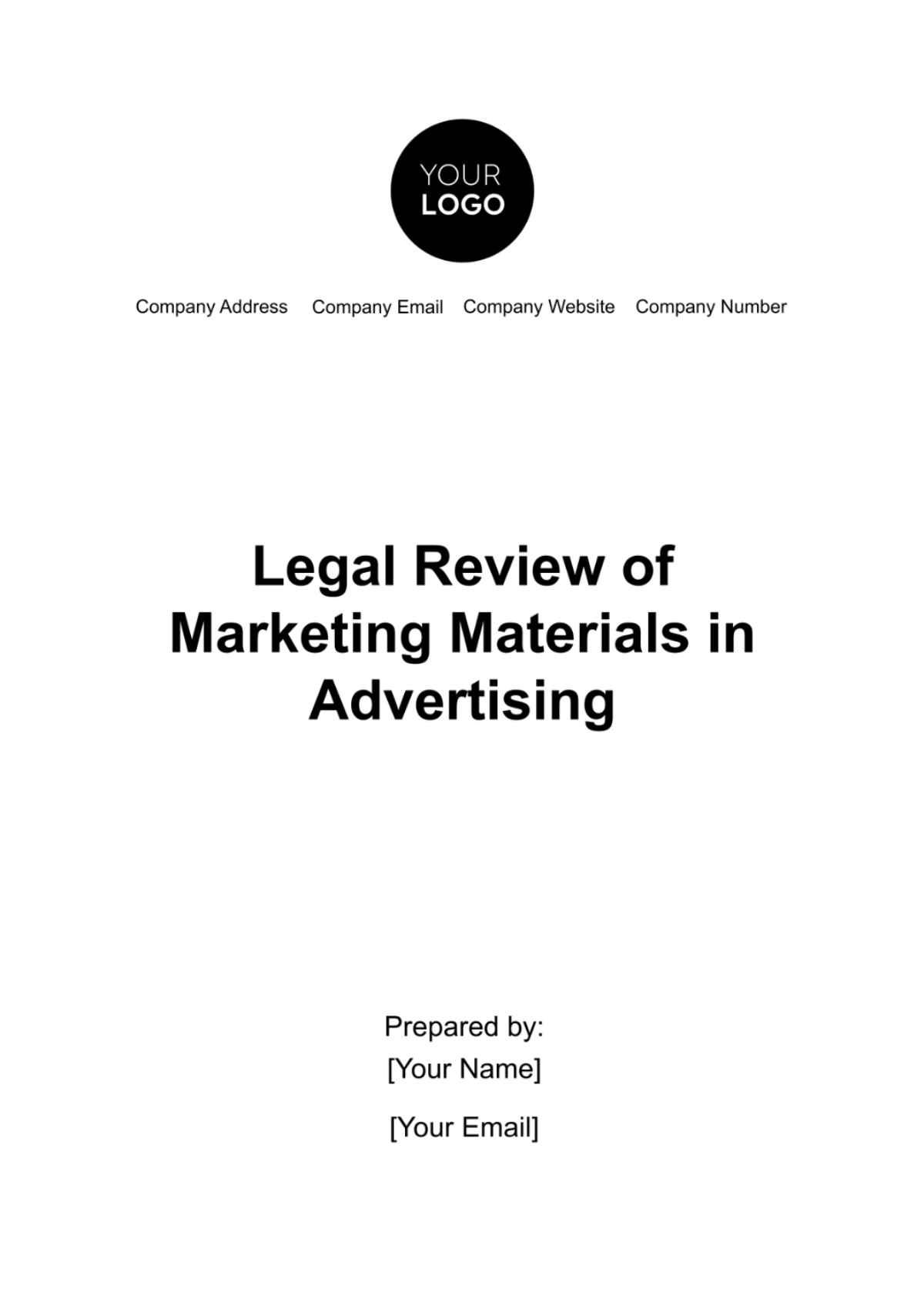
I. Introduction
The purpose of this legal review is to meticulously assess the compliance of our marketing materials with the applicable legal standards. This review encompasses all forms of marketing, including print, digital, and social media content, to ensure adherence to both federal and state advertising laws.
II. Compliance with Advertising Laws
Compliance with advertising laws is fundamental to ensure that our marketing materials adhere to the highest legal and ethical standards.
A. Federal Trade Commission (FTC) Regulations
The FTC's guidelines form the backbone of our compliance strategy. They require that all advertising be truthful, non-deceptive, and fair. This includes making sure that all claims are substantiated, and that any disclaimers or disclosures are clear and conspicuous. For example, if a product claims to be "environmentally friendly," this claim must be backed by specific, verifiable information.
B. State-Specific Laws
In addition to the FTC guidelines, we must also adhere to various state laws which may have more stringent requirements. These laws can vary significantly from state to state and often cover aspects such as the use of language, imagery, and the portrayal of certain groups. For instance, California's Consumer Legal Remedies Act imposes specific requirements on advertising which can include the prohibition of misleading statements or practices.
III. Truthfulness and Honesty
In every marketing campaign, truthfulness and honesty are not just legal requirements but are also critical to maintaining the trust and loyalty of our customers.
A. Substantiation of Claims
All factual claims in our marketing materials must be supported by evidence. This evidence should be gathered and verified before the claims are made public. For example, if a product is marketed as the "best-selling" in its category, we need to have current sales data to back up this claim.
B. Clarity in Messaging
Ambiguity in advertising can lead to misinterpretation and potential legal challenges. It is imperative that all our marketing messages are clear and straightforward. For instance, if a product offers a free trial, the terms and conditions of the trial must be explicitly stated, including any automatic subscription or billing that occurs after the trial period ends.
C. Avoidance of Misleading Statements
We must carefully review all marketing materials to ensure they do not contain any statements or implications that could be considered misleading. This includes exaggerating product capabilities, misleading pricing information, or presenting opinions as facts. Any comparative advertising must be factual, and differences must be substantiated.
IV. Comparative Advertising
Comparative advertising can be an effective way to highlight the advantages of our products over competitors. However, it must be conducted within specific legal boundaries to avoid potential disputes or regulatory issues.
A. Fair and Substantiated Comparisons
Fact-Based Claims: All comparative claims must be based on objective, verifiable facts. For instance, if a product is claimed to last longer than a competitor's, this must be supported by robust testing data.
Relevance: The compared attributes must be relevant to the consumer’s decision-making process. Comparing irrelevant or insignificant features can be misleading.
Table: Examples of Comparative Advertising
Acceptable Claim | Unacceptable Claim |
"Product X has 20% more battery life than Product Y, based on standard usage tests." | "Product X is better than Product Y" (without specifying in what way). |
"Our software loads 30% faster than Competitor Z, as tested by [Independent Testing Company]." | "Our software is the most advanced" (without factual basis). |
B. Legal and Ethical Considerations
Non-Disparagement: Comparative ads should not disparage or denigrate competitors or their products.
Marketplace Respect: The goal is to inform consumers, not to create a negative image of competitors.
V. Use of Endorsements and Testimonials
Endorsements and testimonials are powerful tools in marketing but come with specific legal requirements, primarily guided by the Federal Trade Commission (FTC).
FTC Guidelines on Endorsements
Honesty and Authenticity: Endorsements must reflect the honest opinions or experiences of the endorser.
Disclosure of Material Connections: Any relationship between the endorser and the company (such as payments or free products) must be clearly disclosed.
Representativeness of Testimonials
Typicality of Experience: Testimonials should represent what consumers can generally expect from the product. If the testimonial is not typical, a disclaimer stating so must be included.
Table: Endorsement Disclosure Compliance
Type of Endorsement | Required Disclosure | Example |
Celebrity Endorsement | Disclosure of any compensation or relationship with the brand. | "Paid spokesperson for [Brand]." |
Consumer Testimonials | If the experience is not typical, a disclaimer is needed. | "Results not typical. Average weight loss is X pounds in Y weeks." |
Influencer Marketing | Clear identification if the post is sponsored. | "#Ad" or "#Sponsored" visibly included in social media posts. |
VI. Intellectual Property Considerations
Intellectual property (IP) considerations are crucial in marketing to avoid infringement and to protect our own intellectual assets.
A. Trademarks
Usage and Attribution: Ensure that all trademarks, including those of other companies, are used correctly. This includes proper acknowledgment and adherence to usage guidelines.
Internal Trademarks: Regularly monitor our own trademarks to prevent unauthorized use and maintain their value.
B. Copyrights
Licensing and Permissions: Secure the necessary licenses for copyrighted material such as music, images, and text. This includes understanding the scope of the license (e.g., geographical, duration).
Original Content Creation: Encourage the creation of original content to reduce reliance on external copyrighted materials.
Table: Intellectual Property Compliance Checklist
IP Type | Compliance Action | Example |
Trademarks | Verify proper usage and attribution. | Using a competitor’s logo correctly in comparative ads. |
Copyrights | Obtain necessary licenses and permissions. | Licensing a song for a commercial. |
Patents | Ensure that marketing materials do not infringe on patents. | Avoiding the use of patented technology in product design. |
Trade Secrets | Protect confidential information in marketing. | Not disclosing proprietary formulas in promotional materials. |
Avoiding Infringement
Regular Audits: Conduct regular audits of marketing materials to identify potential IP infringements.
Employee Training: Provide training to marketing staff on IP laws and the importance of compliance.
Protecting Our IP
Enforcement: Actively enforce our IP rights to prevent dilution and misuse.
Documentation: Maintain thorough documentation of all IP assets, including creation dates, registration information, and usage guidelines.
VII. Privacy and Data Protection
In an era where consumer data is a valuable commodity, respecting privacy and adhering to data protection laws is crucial.
A. Data Collection and Use
Transparency: Clearly communicate to customers what data is being collected and for what purpose.
Consent: Ensure that explicit consent is obtained, particularly for sensitive information.
Data Security: Implement robust security measures to protect collected data from unauthorized access.
Table: Key Data Protection Regulations
Regulation | Key Requirement | Implication for Marketing |
GDPR (EU) | Strict consent and data handling rules. | Must have clear consent mechanisms for EU customers. |
CCPA (California) | Consumer rights to access and delete their data. | Must allow California residents to opt-out of data selling. |
VIII. Target Audience and Vulnerable Groups
Targeting the right audience while protecting vulnerable groups is a balancing act that requires careful consideration.
A. Protecting Vulnerable Groups
Children: Adhere to the Children's Online Privacy Protection Act (COPPA) which restricts data collection from children under 13.
Elderly and Other Vulnerable Groups: Avoid marketing practices that could be seen as exploiting vulnerabilities, such as diminished capacity to understand complex terms.
B. Ethical Targeting Practices
Inclusivity: Ensure that marketing campaigns are inclusive and do not discriminate against any group.
Sensitivity: Be sensitive to cultural, social, and economic factors that might influence the impact of marketing on different groups.
IX. Digital Marketing Specifics
Digital marketing comes with its own set of rules and best practices, especially in the realm of online and social media advertising.
A. Online Advertising Compliance
Cookie Usage: Follow regulations about cookie usage and provide clear opt-out options for tracking.
Email Marketing: Comply with the CAN-SPAM Act, which includes requirements like clear opt-out mechanisms and truthful subject lines.
B. Social Media Guidelines
Influencer Partnerships: Ensure that influencers disclose their relationship with the brand.
User-Generated Content: Monitor and manage user-generated content on platforms to avoid association with inappropriate or infringing materials.
X. Review and Approval Process
An effective review and approval process is essential to ensure that all marketing materials meet legal standards and company policies.
A. Steps in the Approval Process
Initial Review: Conducted by the marketing team for alignment with campaign objectives and brand standards.
Legal Review: Legal team reviews for compliance with advertising, intellectual property, and privacy laws.
Final Approval: Senior management approves the final version before release.
B. Documentation and Record-Keeping
Maintain comprehensive records of the review process, including notes on decisions made and approvals granted.
XI. Conclusion
This legal review underscores the critical importance of adhering to legal and ethical standards in all aspects of marketing. By following these guidelines, we not only comply with legal requirements but also build and maintain the trust of our consumers, a key factor in the long-term success of our brand.
Through diligent adherence to these principles, we can effectively navigate the complex landscape of modern marketing while upholding the integrity and reputation of our company.
- 100% Customizable, free editor
- Access 1 Million+ Templates, photo’s & graphics
- Download or share as a template
- Click and replace photos, graphics, text, backgrounds
- Resize, crop, AI write & more
- Access advanced editor
Ensure legal compliance and accuracy in marketing materials with Template.net's Legal Review of Marketing Materials in Advertising Template. This editable and customizable tool, supported by our Ai Editor Tool, empowers you to conduct thorough legal reviews. Safeguard your brand reputation and mitigate risks with precise and secure marketing content.

